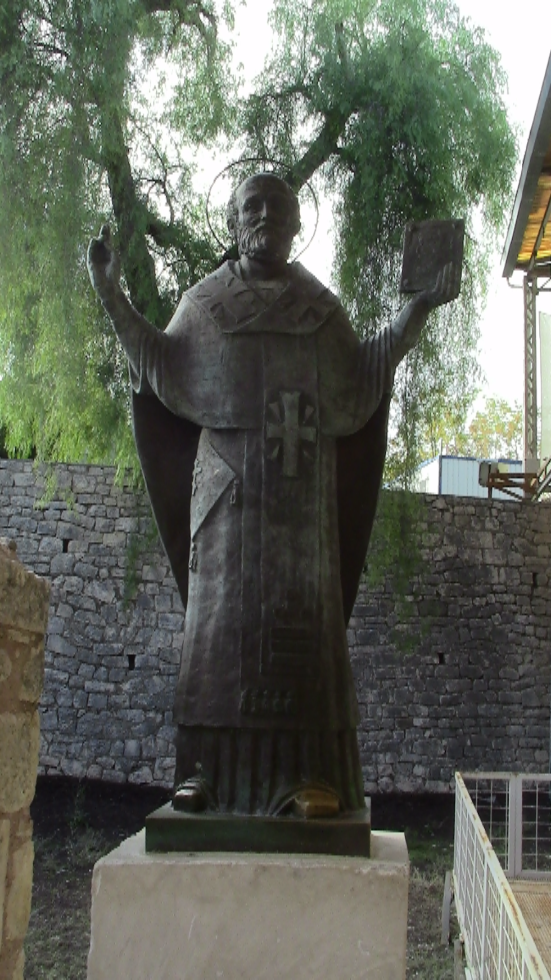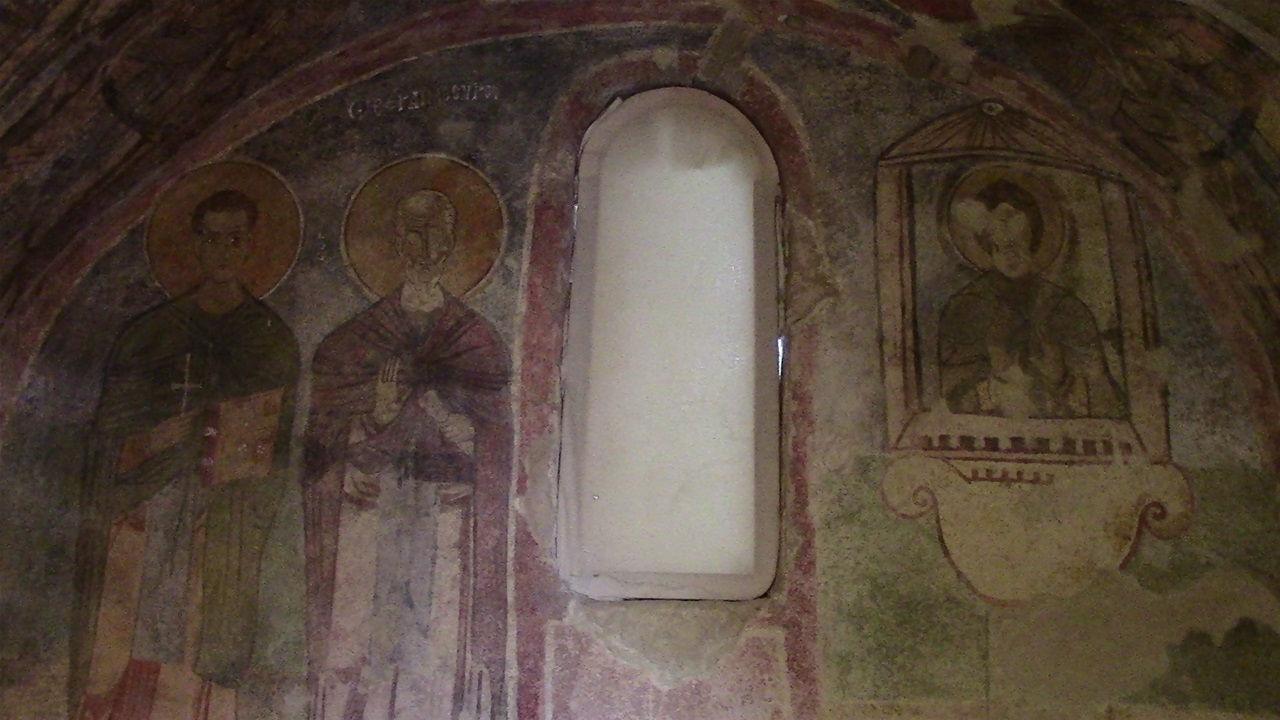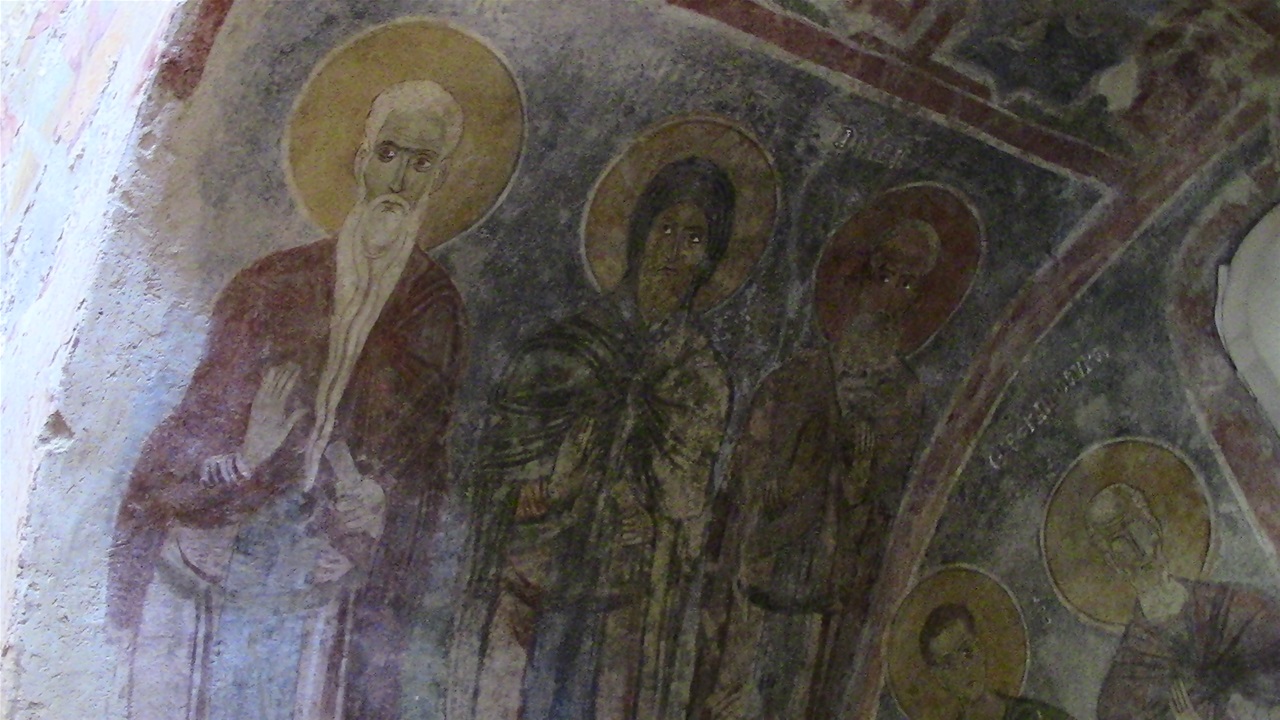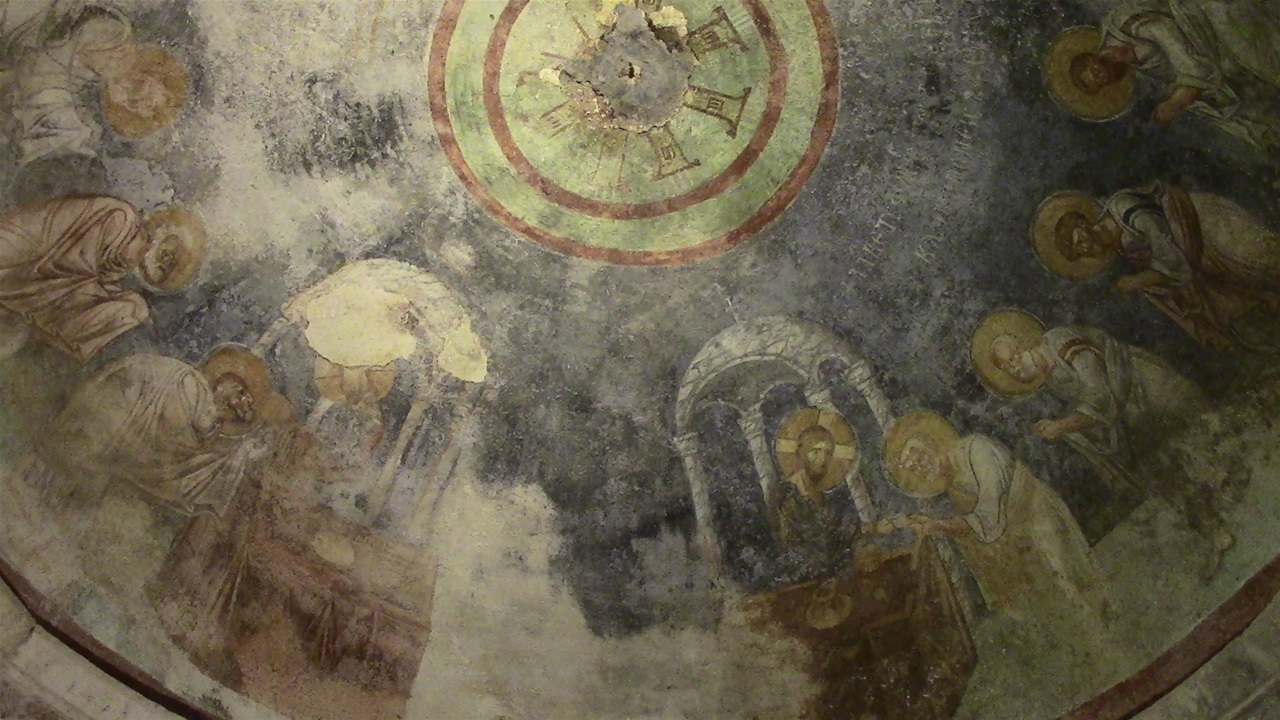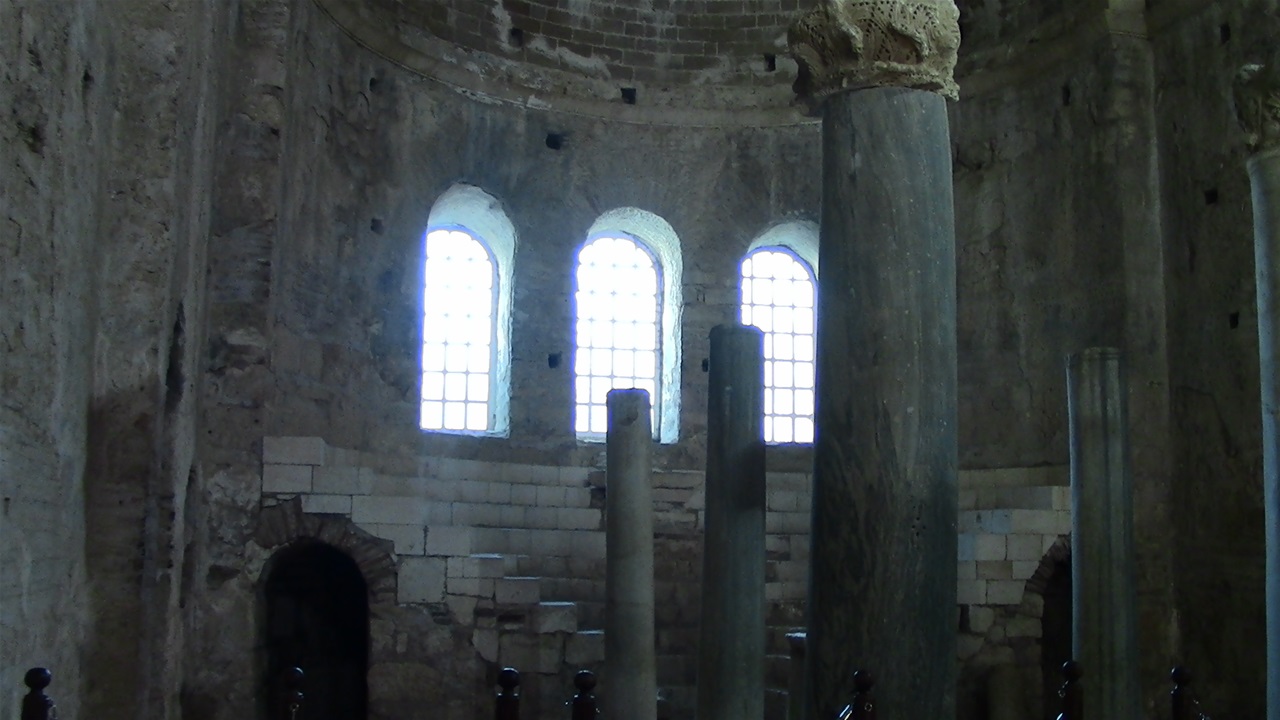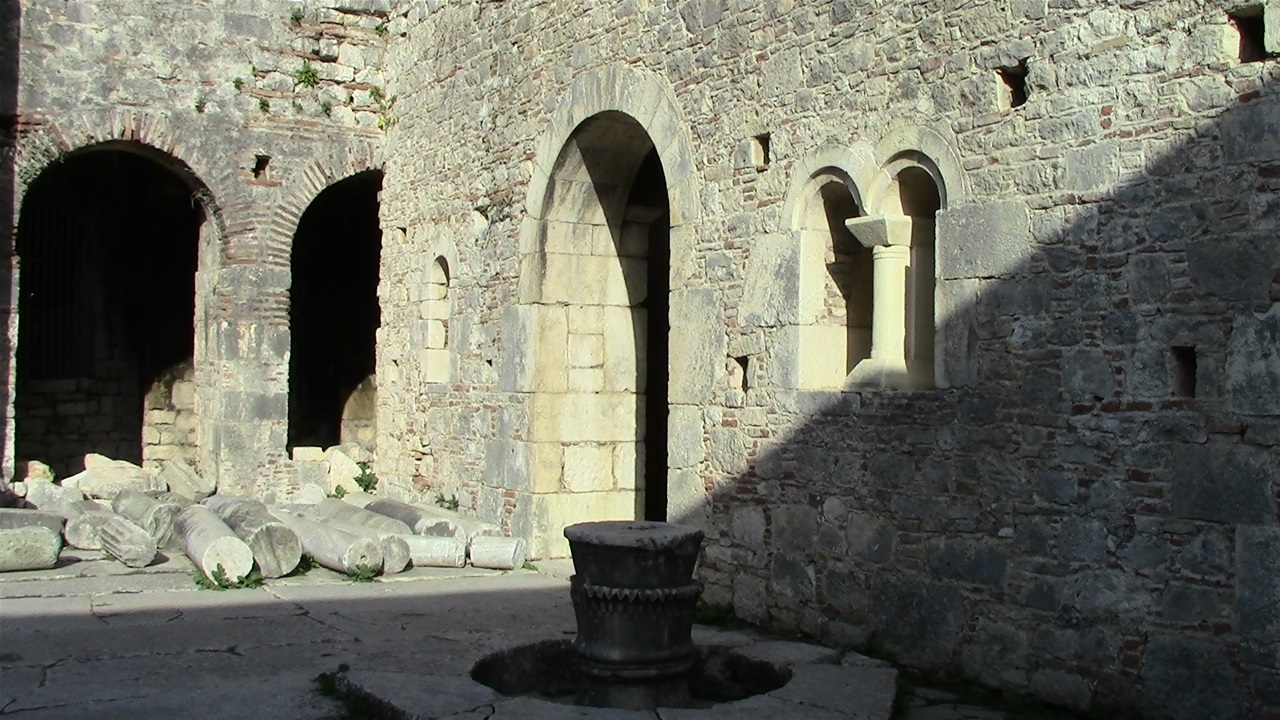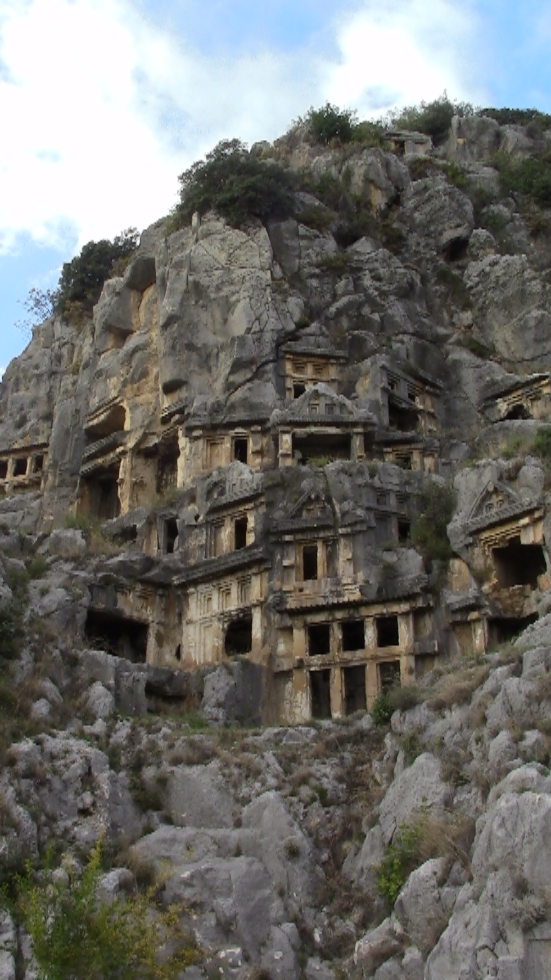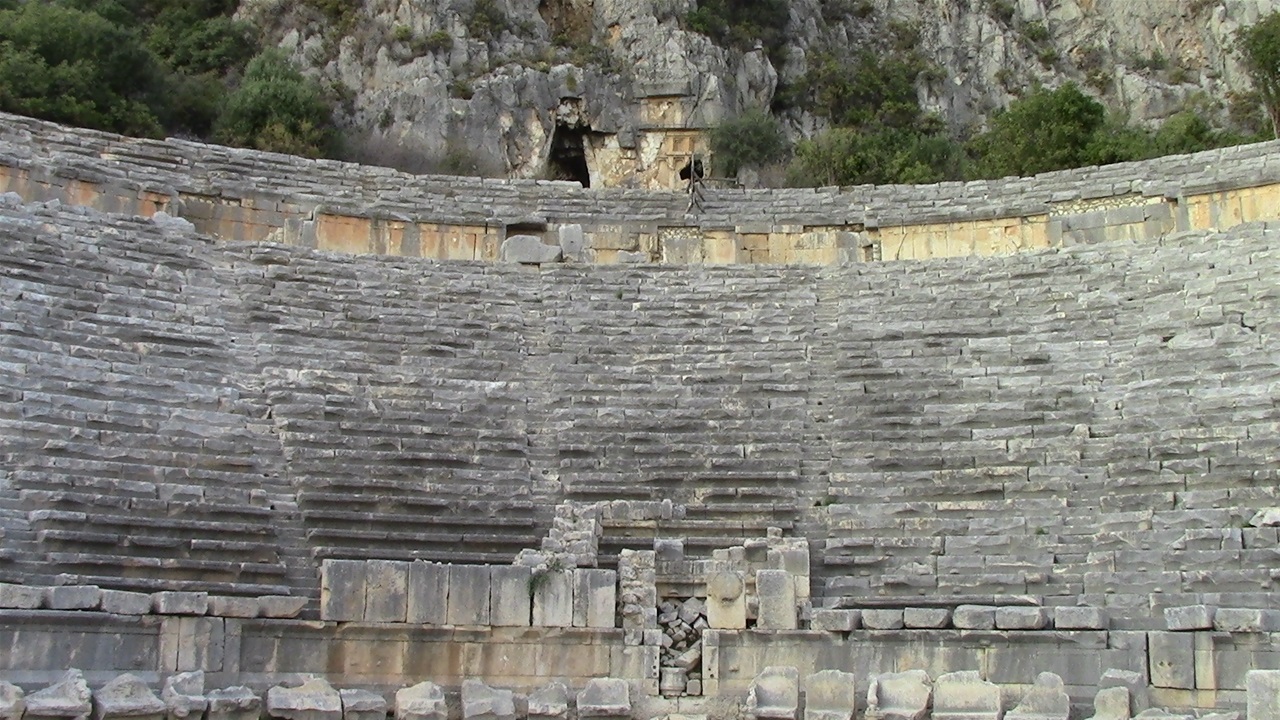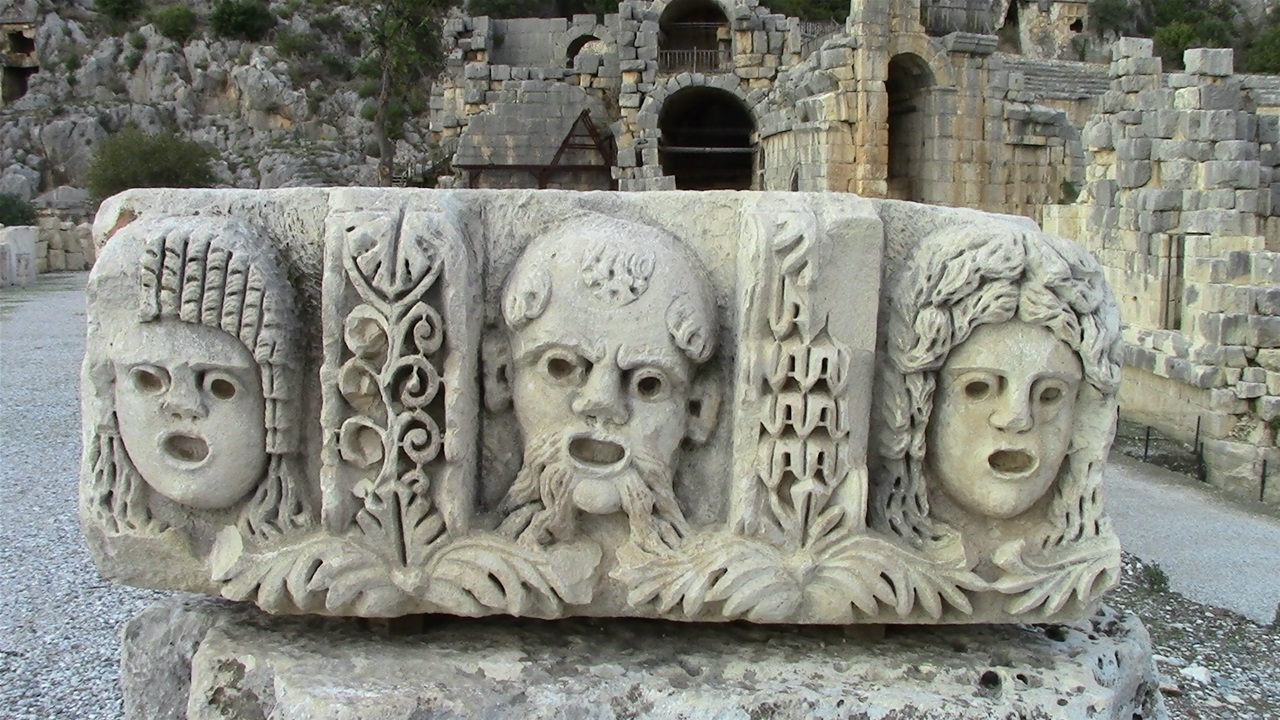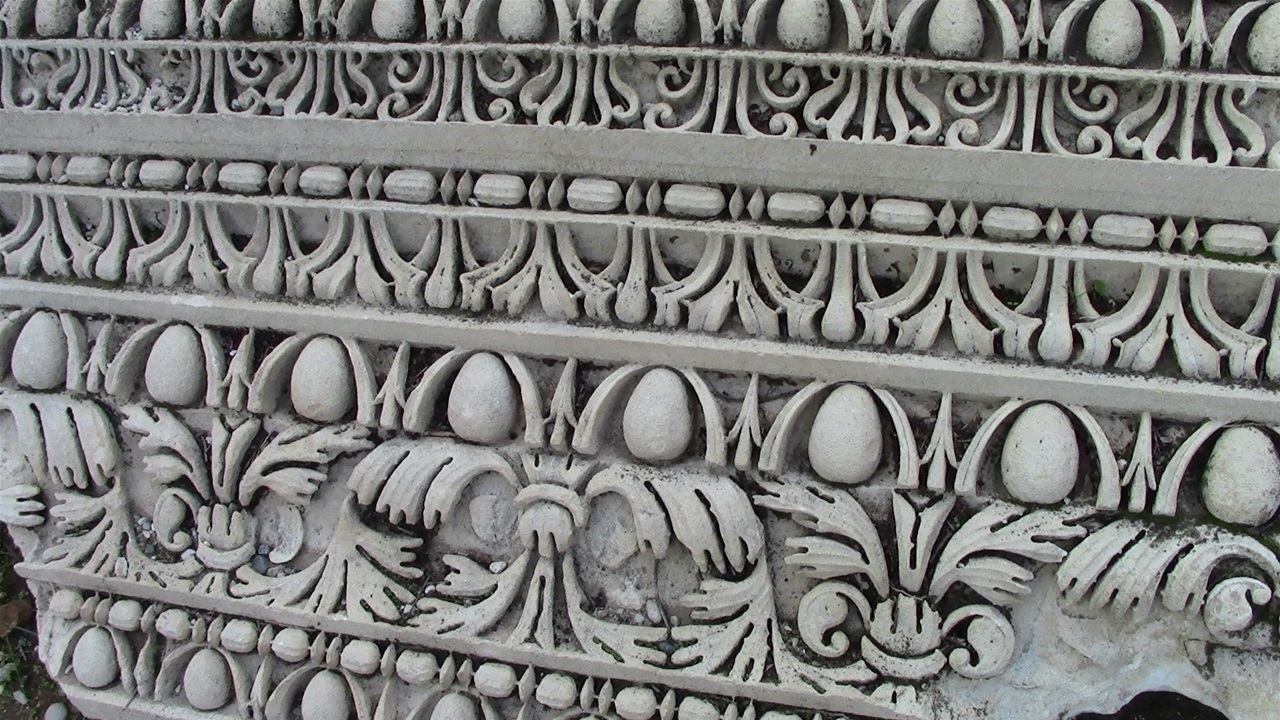Demre & Myra
So, we took the bus to Demre which is about an hour East of Kas, to visit Aziz (St) Nikolaos. The church and museum of St Nikolaos (St Nick aka Father Christmas). St Nikolaos was the bishop of Myra in the 4th century AD. He was reputed to be a very kindly and giving man, especially to children. He also blessed and prayed for childless couples who were then able to have families. The church is under restoration so there is a lot of scaffolding etc, but this doesnt spoil the beauty of the paintings on the walls depicting various biblical scenes. Some paintings are still quite clear, others less so. The mosaics on the floors are so intricate. It must have been quite brilliant in its day. Sadly the audio guide was not so good, I am sure we would have appreciated it more if we knew what we were looking at. The bones of St Nikolaos were said to have been stolen and taken to Bari in Italy, but this has recently been disproved. The Italians got some other bones in error! I was hoping to find something to buy in memory of the day to add to my Christmas decoration collection, but unfortunately there was nothing nice to be had. Bit disappointing really.
We got a taxi to Myra Orenyeri which is 1.5k outside Demre. This is the Myra archaeological site. Myra was a leading city of Lycia built on the River Demre Cay. The name Myra is thought to have come from Myrrh, the oil obtained from the Myrtle plant (gold, frankinsence and Myrrh!) There was once a huge temple dedicated to the goddess Artemis (mother goddess of Analotolia) with gardens and terraces. This was destroyed by St Nikolaos in an attempt to stamp out paganism. St Paul changed ships in the port of Myra on his way to his trial in Rome, in about 60AD, after being arrested in Jerusalem for inciting a riot. A lot of grain was produced in this region, and there was a whole fleet of grain ships transporting it around from this major port. These ships also carried passengers so it was probable that he was transported on a grain ship. This area is a massive flood plain and several floods in history have buried the ancient city under metres of alluvial soil. Alluvial soil is very rich and fine. The modern town of Demre has been built on top of this and the whole plain is covered in huge polytunnels where tomatoes, cucumbers, peppers etc are grown. It is quite a sight especially viewed from the road above the town, acre upon acre of polytunnels glinting in the sun. Back to the visible ruins of Myra - all that is left is the rock tombs and theatre. The rock tombs are very impressive. They would once have been brightly painted and the whole cliff face would have been a riot of colour. Depending on your status in society, the tombs and carving would have varied in intricacy. The theatre is the largest in Lycia and is still in good shape. The carvings are still crisp and quite stunning, depicting theatrical masks and mythological scenes. Earthquakes have felled some parts of the structure, but the main seating area of 38 rows is still perfectly in tact. Well worth visiting.
